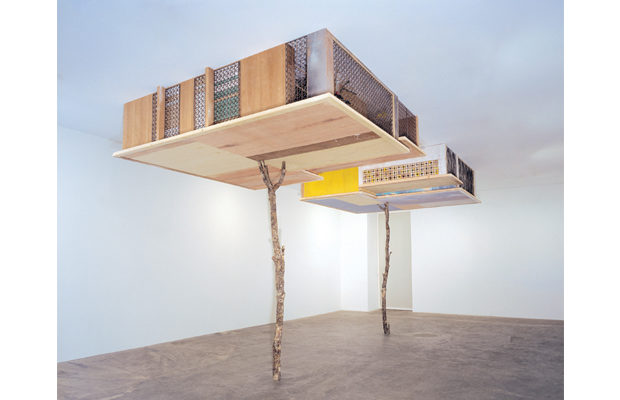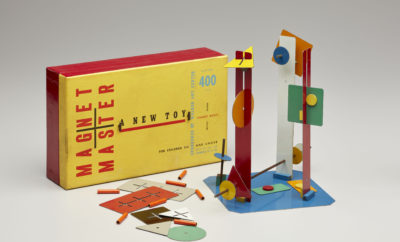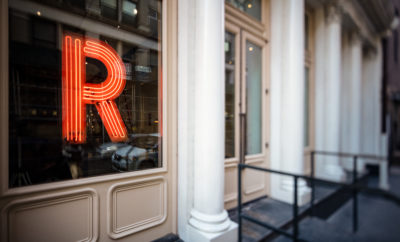 Photo courtesy of the artist and Casey Kaplan, New York
Photo courtesy of the artist and Casey Kaplan, New York
Exhibition
A Bird’s-Eye View of Modern Architecture
Step into the gallery at the Pérez Art Museum Miami (PAMM), and you are enveloped by song, melodic and enchanting. Look up, and you will see scale-model modern houses sitting high atop skinny tree trunks, almost as if they were, in fact, designed for very forward-thinking birds. All this might seem to be homage to something romantic, perhaps the way Case Study Houses appeared to cantilever over the edge of the land, but in fact they speak to far less idyllic moments in the history of architecture and social policy. Look closer, and you’ll see the varied metal screening covering windows, favela style, and you’ll notice that the wooden facades are mismatched—not glamorous at all. The birdhouses are the work of the artist Simon Starling, whose projects are embedded in research and offer surprising views of the modern world.
The two mahogany structures atop the poles were in fact designed after a failed public housing project built in the 1960s in Bayamón, Puerto Rico. At the time the houses were built, a kind of tropical optimism still reigned in Puerto Rico; even the poorest residents left their houses open. But, says Maria Elena Ortiz, a curatorial assistant at PAMM, all that changed as the island’s crime rate rose, and once-airy houses began to be turned into makeshift fortresses. “It’s a very complex story in terms of the history,” says Ortiz, who was also charged with writing the essay for the brochure that accompanies the installation of the birdhouses, a recent gift to the museum from Dennis and Debra Scholl.
The English-born Starling (he now lives in Denmark) sought to capture the glories and indignities, the successes and failures of such social programs in his Inverted Retrograde Theme, USA (House for a Songbird), which he created during a 2002 residency at the Hammer Museum in Los Angeles. Starling first came to this idea during an earlier residency in Vienna where he was probing the works of the musician Arnold Schoenberg; from that he began to explore the connections between music and architecture, which in turn led him to the Austrian architect Simon Schmiderer, who—as Ortiz points out—was also inspired by Schoenberg. And in the 1960s, Starling discovered, Schmiderer had designed a social housing project in Puerto Rico. One thing clearly led to another.
Schmiderer’s housing, inspired in part by Ludwig Mies van der Rohe, was not only open in plan but open to the elements, but within a decade, the residents had begun to adapt the units to local customs and local needs, adding ornate screening and enclosures, “producing a dramatic visual contrast between the simple, rectangular doorways and windows and their individually designed baroque gates,” writes Ortiz in her explanatory essay.
Installed in a small gallery in the new Herzog and de Meuron-designed PAMM (and on view to September 14), Inverted Retrograde Theme USA has a powerful presence—enhanced by the bird melodies that sound like they are coming from within. The recorded birdsong conjures up memories of sultry island days and nights where one would be enveloped in the sounds of birds singing and frogs croaking, says Ortiz, herself a native of Puerto Rico. “It is highly poetic.” In Starling’s interpretation, “you wonder, who is being caged now?”












